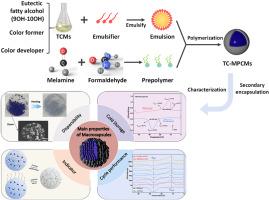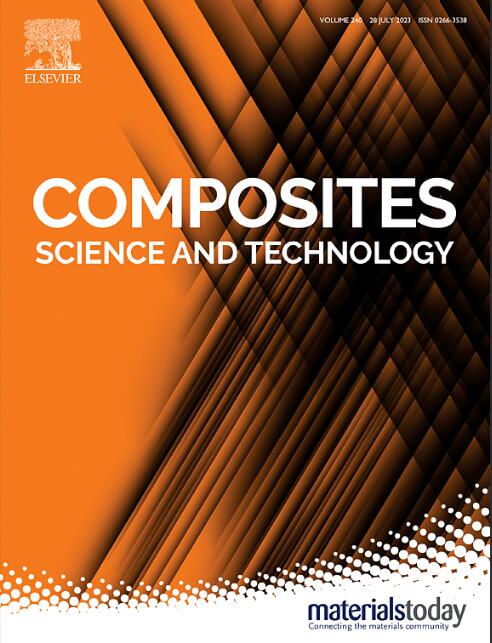Millimeter-scale macrocapsules with cold energy storage and temperature indication for vaccine storage
IF 8.3
1区 材料科学
Q1 MATERIALS SCIENCE, COMPOSITES
引用次数: 0
Abstract
This study aims to prepare millimeter-scale macrocapsules with cold energy storage and temperature indication suitable for the requirement of vaccine storage (−25 °C ∼ -15 °C). In these macrocapsules, reversible thermochromic microencapsulated phase change materials (TC-MPCMs) are used as dispersions, and flexible calcium alginate is served as the polymer matrix. Macrocapsules exhibit a particle size distribution from 0.5 mm to 3.0 mm, with a melting temperature of −18.4 °C, a melting enthalpy of 86.0 J/g and an encapsulation efficiency of 45.5 %. After melting of the PCMs (Phase change materials), these macrocapsules can undergo a reversible discoloration, with a color difference of 27.54. Additionally, the volatilization of internal PCMs can also trigger the discoloration reaction. After 100 thermal cycles, the latent heat loss of the macrocapsules is less than 5 %, and the calcium alginate shell material delays the thermal decomposition of internal PCMs. Finally, the storage-release cold energy test shows that at 25 °C, the macrocapsules can maintain the ideal temperature range (−25 °C ∼ -15 °C) for 10.34 min. The millimeter-scale macrocapsules successfully address the issues of ultrafine powder contamination, difficulty in reuse and recycling of micron-scale TC-MPCMs, and show excellent potential for vaccine frozen storage.

用于疫苗储存的具有冷能储存和温度指示功能的毫米级大胶囊
本研究旨在制备具有冷能储存和温度指示功能的毫米级大胶囊,以满足疫苗储存的要求(-25 °C ∼ -15°C)。在这些大胶囊中,可逆热致变色微胶囊相变材料(TC-MPCMs)被用作分散体,柔性海藻酸钙被用作聚合物基质。大胶囊的粒度分布为 0.5 毫米至 3.0 毫米,熔化温度为 -18.4 °C,熔化焓为 86.0 焦耳/克,封装效率为 45.5%。相变材料(PCM)熔化后,这些大胶囊会发生可逆变色,色差为 27.54。此外,内部 PCM 的挥发也会引发褪色反应。经过 100 次热循环后,大胶囊的潜热损失小于 5%,海藻酸钙外壳材料延缓了内部 PCM 的热分解。最后,储存-释放冷能测试表明,在 25 °C时,大胶囊可在理想温度范围(-25 °C ∼ -15 °C)内保持 10.34 分钟。毫米级大胶囊成功解决了超细粉污染、微米级 TC-MPCMs 难以重复使用和回收的问题,在疫苗冷冻储存方面表现出了卓越的潜力。
本文章由计算机程序翻译,如有差异,请以英文原文为准。
求助全文
约1分钟内获得全文
求助全文
来源期刊

Composites Science and Technology
工程技术-材料科学:复合
CiteScore
16.20
自引率
9.90%
发文量
611
审稿时长
33 days
期刊介绍:
Composites Science and Technology publishes refereed original articles on the fundamental and applied science of engineering composites. The focus of this journal is on polymeric matrix composites with reinforcements/fillers ranging from nano- to macro-scale. CSTE encourages manuscripts reporting unique, innovative contributions to the physics, chemistry, materials science and applied mechanics aspects of advanced composites.
Besides traditional fiber reinforced composites, novel composites with significant potential for engineering applications are encouraged.
 求助内容:
求助内容: 应助结果提醒方式:
应助结果提醒方式:


